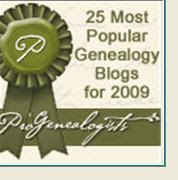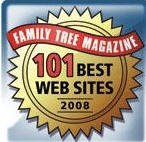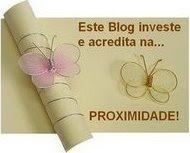Is your research focused on historic Hungary's Maramaros county? Today it is Maramures county, Romania and sub-Carpathian Ukraine.
This announcement should encourage researchers of these areas to jump for joy!
It also supports that old adage: If you want something done, ask a busy person or a group of busy persons!
Brooke Schreier Ganz is definitely one of those people, as are Sandy Malek, Vivian Kahn and others. Despite their considerable personal and professional responsibilities - not the least those connected to JGSLA 2010 - this is what they and other volunteers are working on right now.
She has asked Tracing the Tribe to inform its readers about this broad project that should assist so many more researchers to find out more about their families.
There's a new project underway to index Jewish vital records for towns that were located in the former Hungarian county of Maramaros. Today, these towns are split between Maramures county in northern Romania and the Zakarpattya (sub-Carpathian) region of southwestern Ukraine, so this project will be valuable for researchers of all three areas.
Brooke has completed a first-ever inventory database of all of the specifically-Jewish vital records (pre-1896) known to be held in the Romanian National Archives branch in Baia Mare, Romania, which is where most of the Maramaros towns' records are stored today. She has put it online on the project's website (see below).
Both modern town names and many former/alternate/Hungarian names are listed, and all are searchable. Using that new inventory database as a guide, and with the help of a great researcher in Romania, the group has started to obtain high quality digital photographs, page by page, of many of the old Jewish register books stored in Baia Mare, encompassing thousands of Jewish records. They hope to acquire more in the future.

Above find a birth register page from Sacel, Romania.
This project will index these records, placing data into spreadsheets, and submitting all the spreadsheets for inclusion into the various free JewishGen databases (All-Hungary,All-Romania, All-Ukraine, etc.), so that they will be available to everybody. These register books have
NOT been microfilmed by the Mormons.
Here's a guide to the project:
1) Which towns from Maramaros county are known to have surviving Jewish vital records stored in the Baia Mare archives?Towns now located in Romania, known to have surviving Jewish vital records in the Baia Mare archives:
Baia Mare (Nagybana), Berbesti (Bardfalva), Birsana (Barczanfalu), Bistra (Petrovabisztra), Bocicoel (Kisbocsko), Bocicoiu Mare (NagyBocsko), Bogdan Voda (Konyha), Borsa, Botiza (Batiza), Breb, Budesti (Budfalu), Calinesti (Felsokalinfalva), Campulung la Tisa (Hosszumezo), Cornesti (Somfalu), Craciunesti (Karacsonfalva), Desesti (Desze), Dragomiresti (Dragomerfalva), Dragos Voda, Feresti (Fejerfalu), Giulesti (Gyulafalu), Glod, Harnicesti (Hernecs), Hotinka (Hoteni), Iapa (Kabola-Patak), Ieud (Jood), Kabalacsarda (Kabola Csarda), Leordina (Lerdene), Lunca la Tisa (Lonka), Mara (Kracsfalva), Moisei (Mojszin), Nanesti (Nanfalu), Ocna Sugatag (Akna-Sugatag), Oncesti (Vancsfalva), Petrova, Poienile de sub Munte (Ruszpolyana), Poienile Izei (Sajo-Polyana), Remeti (Remete), Rona de Jos (Alsorona), Rona de Sus (Felsorona), Rozavlea (Rozalia), Ruscova (Ruszkova), Sacel (Szacsal), Salistea de Sus (Felsoszelistye), Sapinta (Szaploncza), Sarasau (Szarvaszo), Sarbi (Sirbi), Satu Sugatag (Falusugatag), Seini(Szinervaralja), Sieu (Sajo), Sighetu Marmatiei (Szighet), Stramtura(Szurdok), Tirgu Lapus (Magyarlapos), Vadu Izei (Farkasrev), ValeaStejarului (Disznopatak), Valeni (Mikolapatak), Viseu de Jos (Alsovisso), Viseu de Mijloc (Kozepviso), Viseu de Sus (Felsovisso).
- Towns now located in sub-Carpathian Ukraine, known to have surviving Jewish vital records in the Baia Mare archives:
Bedevlya (Bedohaza), Bila Tserkva (Feheregyhaza), Bilovartsi (Kiskirva), Bushtyno (Falu-Bustyahaza), Chumalovo (Csomanfalva), Dobryanskoye (Nyagova), Drahovo (Kovesliget), Dubove (Dombo), Dulovo (Dulfalva), Hanychi (Ganya), Hrushovo (Kortvelyes), Kalyny (Alsokalinfalva), Kolodne (Darva), Komsomol's'k(Nemetmokra), Kosivs'ka Poliana (Kaszopolyana), Krasna (Taraczkraszna), Kryve(Nagykirva), Lopukhiv (Brusztura), Neresnytsia (Nyereshaza), Nizhneye Selishche (Alsoszelistye), Novobarovo (Ujbard), Novoselytsia (Felsoneresznice), Nyzhnya Apsha (Alsoapsa), Okruhla (Kerekhegy), Pidplesha (Pudplesa), Pryborzhavs'ke (Zadnya), Rus'ka Mokra (Oroszmokra), Rus'ke Pole (Urmezo), Shyrokyy Luh (Szeles-Lonka), Solotvyno (Slatina), Sredneye Vodyanoye (Kozepapsa), Tereblya(Talaborfalu), Teresva (Tarackoz), Ternovo (Kokenyes), Tyachiv (Tecso), Uhlia (Uglya), Ust'-Chorna (Kiralymezo), Velykyy Bychkiv (Kisbocsko), Verkhnie Vodiane (Felso-Apsa), Vil'khivtsi (Irhocz), Vodytsia (Apsita), Volovec (Bordfalva), Vonihove (Vajnag), Vynohradiv(Csamato), Yasinya (Korosmezo).
2) What years do the records cover?Jewish birth, marriage, and death records exist for almost every one of the "Romanian" towns listed above for the period of 1886-1895.
About two thirds of those towns also have birth and death records for the 1870s-1886. A few towns have earlier coverage; one has a tiny number of birth records back to 1772! "Ukrainian" towns' records coverage is more uneven, but for some of the little towns north of Szighet, some record books have survived (with a few gaps) back to 1851. See the website for a full listing of all known record types and years for each town. That database will be continually updated and corrected as we learn more.
3) What are the records like?They are nearly all in Hungarian (some old ones in German and, for one town, in Hebrew) and are generally very easy to understand, even if researchers don't know Hungarian. Handwriting ranges from decent to excellent. Sample photos of some records are on the website.
What information might a record contain? Birth records, for example,
generally offer these fields
[NOTE: Not every record contains every field] :
Child: Given name, date of birth, gender.
Father: Surname, given name, hometown, occupation.
Mother: Maiden name, given name, hometown.
Town of birth.
Town of birth registration.
Notes (may include Godfather's name [often a relative, such as a grandfather], other information).
Other surnames mentioned in this record.
Other towns mentioned in this record.
Casting a wider net is important when working with Eastern European records. According to this project, birth records for one town showed that 99% of children born in that town in the 1880s had at least one (and sometimes both) parents born in other nearby towns. This means that your family of interest may be found in more towns than you might know about.
4) How can I help?Readers and researchers of these areas can help the Maramaros/Maramures indexing project: Volunteer to help transcribe the old records, and/or make a donation (tax-deductible in the US!) to JewishGen to help acquire photographs of more old record books. See additional details on the website.
The project is also looking for people with records indexing experience to help manage all of this! Please e-mail if you might be interested.
5) What's the website address?http://www.MaramarosJewishRecords.com/Special thanks go to Dan Jurca, Beth Long, Sam Schleiman, Vivian Kahn and Sandy Malek for helping to get this project off the ground.
Readers with questions may email
Brooke.
 Israel now has its own version of the popular BBC hit, Who Do You Think You Are.
Israel now has its own version of the popular BBC hit, Who Do You Think You Are.






























































